order

Coleoptera
“Adult Beetles”

Coleoptera
“Larval Beetles”

Diptera
“True Flies”

Ephemeroptera
“Mayflies”

Hemiptera
“True Bugs”

Lepidoptera
“Aquatic Caterpillars, Snout Moths”

Megaloptera
“Alderflies, Dobsonflies, and Fishflies”

Odonata
“Dragonflies and Damselflies”

Plecoptera
“Stoneflies”

Trichoptera
“Caddisflies”
family
Aeshnidae
genus
Boyeria
“Spotted Darners”
Genus Overview
Two species of Boyeria occur in eastern North America. Unlike most genera of Aeshnidae, larvae of Boyeria are found in smaller, slowly flowing streams in woods, where they hide under rocks and heavy accumulations of leaves and sticks. Larvae are mostly dark except for banded legs and a conspicuous pale spot on the top of abdominal segment 8. Before molting to the adult stage, larvae crawl out of the water, about a foot (30 cm) above the water line, where they grasp the solid substrate, split their larval exoskeletons on the dorsal midline, and slowly emerge as adults.
Characteristics
POLLUTION TOLERANCE
Southeast: up to 6.3
Upper Midwest: up to 2
Midwest: up to 3.5
0 = least tolerant, 10 = most tolerant
FEEDING HABITS
Engulfer / Predator
MOVEMENT
Climber
Clinger
Sprawler
Clinger
Sprawler
DISTRIBUTION
Widespread (east of the Rocky Mtns.)
HABITAT
Lotic-depositional
Lotic-erosional
Lotic-erosional
Diagnostic Characters
Order
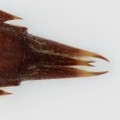
Abdomen with 5 Sharp Stiff Points or 3 Gills
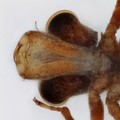
Labial Mask
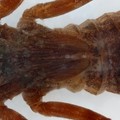
Two Pairs of Wing Pads
Family

5 Short Appendages on End of Abdomen
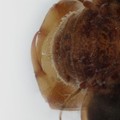
No Dorsal Premental Setae
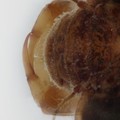
No Palpal Setae
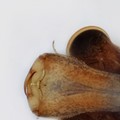
Prementum and Palps Flat
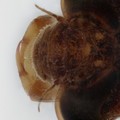
Slender, Bristle-like Antennae
+ Expanded Character List
Order:
Nymph with mask-like labium below chewing mouthparts. Wings developing in wing pads. Segmented legs present, each with two claws.
Family:
Suborder Anisoptera (i.e., dragonflies: with stout body shape, head more narrow than thorax and abdomen; end of abdomen with 5 short pointed projections, external gills absent). Labial mask (including its palm and pair of apical lobes) flat or nearly so. Setae absent from inside palm of mask (pre-mental setae). Ligula (distal margin of the labial mask) with median notch. Antennae usually slender or bristle-like, with 6- or 7-segments. Fore- and middle tarsi each 3-segmented. Mature larvae 31–50 mm long.
Genus:
Lobes at apical end of labial mask squarely truncated. Head roughly trapezoidal and strongly tapered posteriorly; with posterior corners of head, though somewhat rounded, roughly forming right angles. Dorsal side of abdomen rounded, without a median ridge. Dorsal side of abdominal segment 8 usually with conspicuous pale spot. Paraprocts (ventrolateral pair of spine-like projections at the end of the abdomen) about as long as combined length of abdominal segments 9 and 10. Epiproct (dorsomedian spine-like projection at end of abdomen) tapering to pointed or cleft apex.
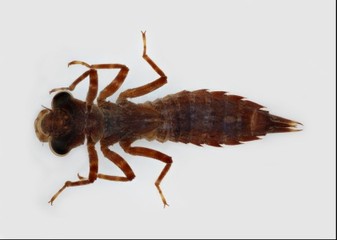
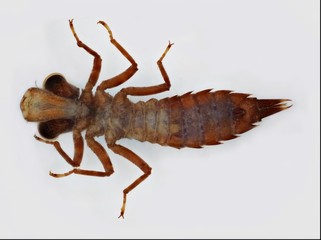
Dorsal
Ventral



